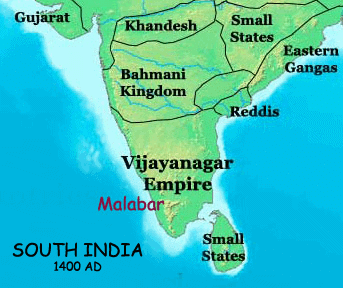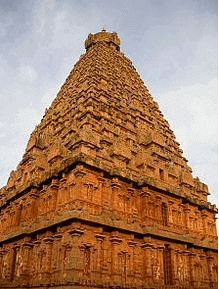The Cholas were a strong and important kingdom in ancient India, which is clear from the fact that Ashoka’s edicts mention them as an independent kingdom.
Chronology of the Rulers & the Army: The Cholas | History for UPSC CSE PDF Download
| Table of contents |

|
| South India And the Cholas |

|
| Chronology of Chola Kings |

|
| The Rulers |

|
| Army |

|
South India And the Cholas
- The traditional Chola country lay between the rivers Pennar and Veller and comprised modern Madras and certain adjoining areas now forming a part of the Karnataka state.
 Chola Empire
Chola Empire - In the second century A.D., a Chola prince, Elara, conquered Ceylon and ruled there for a long period.
- Another important king among early Cholas was Karikala (190 A.D.). He defeated the Pandyas and the Cheras and was a benevolent king.
- During the succeeding centuries, the Chola power declined owing to the rise of the Pallavas and the aggression of the Pandyas and Cheras.
- The capture of Tanjore by Vijayalaya in the middle of the 9th century A.D. was the first step in the revival of the Chola power.
- He is believed to have been a Pallava feudatory.
- The independent kingdom of the Cholas was created by Aditya I, the son and successor of Vijayalaya.
- He defeated the Pallava ruler. Aparajitavarman annexed Tondaimandalam. He invaded the western Gangas and perhaps occupied their capital, Talkad.
- He made Tanjore his capital, beautified it, and built several temples of Shiva there.
- At the time of his death, the Chola kingdom extended from Madras city in the north to the Kaveri in the south.
Chronology of Chola Kings
Vijayalaya Chola (846–871 CE)
Vijayalaya was the founder of the Imperial Chola dynasty. He captured Tanjore from the Muttaraiyar chiefs and established the rule of the Cholas in the mid-9th century.Aditya I (871–907 CE)
The son of Vijayalaya, Aditya I expanded the Chola kingdom by defeating the Pallavas and extending his territory into parts of the Pandya kingdom.Parantaka I (907–955 CE)
A capable ruler, Parantaka I, further expanded the Chola domain. His reign marked significant military successes in the Pandya region, though he faced defeat by the Rashtrakutas at the Battle of Takkolam.Rajaraja I (985–1014 CE)
The accession of Rajaraja I marked a turning point in Chola history. A dynamic and ambitious ruler, he launched extensive military campaigns and established Chola dominance over South India and parts of Sri Lanka.
i) He defeated the Western Gangas, Eastern Chalukyas of Vengi, Pandyas of Madurai, Gangas of Kalinga, and the Cheras of Kerala.
ii) Rajaraja also laid the foundation for a powerful Chola navy and conquered the Maldives and parts of Southeast Asia.
iii) He introduced efficient local self-governance systems and promoted temple construction, most notably the Brihadeeswarar Temple (also known as Rajarajeshvara Temple) at Thanjavur, a magnificent example of Tamil architecture.
iv) A devout Shaiva, he was instrumental in promoting Saivism through temple patronage.
 Brihadeeswarar temple at Thanjavur, Tamil Nadu
Brihadeeswarar temple at Thanjavur, Tamil Nadu
- Rajendra I (1014–1044 CE)
Son of Rajaraja I, Rajendra I, further extended the Chola Empire.
i) He launched successful campaigns in Bengal, Odisha, and South Kosala.
ii) His naval expeditions subdued the Srivijaya Empire (modern-day Indonesia and Malaysia), establishing Indian naval dominance in Southeast Asia.
iii)He also assumed the title "Gangaikonda Chola" and built the city of Gangaikonda Cholapuram as his new capital.
Successors of Rajendra I
Rajadhiraja I (1044–1054 CE)
Eldest son of Rajendra I, he continued his father’s expansionist policies but died in battle while fighting the Western Chalukyas.Rajendra II (1054–1064 CE)
Brother of Rajadhiraja I, he succeeded to the throne and maintained Chola supremacy, defeating the Chalukyas in several campaigns.Virarajendra (1064–1069 CE)
Known for his administrative skills and temple endowments, Virarajendra faced internal revolts and external challenges but managed to keep the empire stable.Kulottunga I (1070–1118 CE)
Grandson of Rajendra I through his daughter and Eastern Chalukya prince, he founded the Chalukya-Chola line. His long and stable reign saw continued prosperity and administrative reforms.Vikrama Chola (1118–1135 CE)
Son of Kulottunga I, he succeeded peacefully and continued his father’s policies. His rule was marked by cultural patronage and relative stability.Kulottunga II (1135–1150 CE)
A patron of the arts and temples, he continued the tradition of strong central governance and maintained friendly relations with other South Indian powers.Rajaraja II (1150–1173 CE)
During his reign, the empire began to show signs of decline, although temple building and cultural patronage remained strong. His rule witnessed increasing decentralisation and feudal tendencies.
The Rulers
- The rulers were hereditary monarchs, with the Chola kings adopting impressive titles.
- The Chola rulers initiated the practice of selecting their successor, known as Yuvaraja, and involving him in governance during their reign.
- This practice ensured a smooth succession without conflicts, even amidst historical challenges.
- Images of kings and queens were preserved in various temples, reflecting the belief in the divine nature of kingship
- The monarch held absolute power, issuing orders that were carefully considered by ministers leading different departments before implementation.
- There was a significant number of officials organised into different grades, divided into upper ‘Perundanam’ and lower ‘Sirudanam’ categories.
- There were no specific recruitment rules for these officials, nor were salaries standardised.
Army
The Chola dynasty was known for its formidable military strength, both on land and at sea. Their armies were composed of various units, including infantry (foot soldiers), cavalry (horseback soldiers), and war elephants, which were a significant part of their military strategy.
Key Features of the Chola Army
- Investment in Cavalry: The Cholas placed a strong emphasis on building a capable cavalry. They imported high-quality horses from Arab countries to enhance their military strength on horseback.
- Royal Guards: The kings of the Chola dynasty had elite personal guards known as the Velaikkaras. These guards were fiercely loyal and dedicated to protecting the king at all costs, even risking their own lives in the process.
- Honours for Valour: Soldiers and officers who demonstrated exceptional bravery and skill in battle were rewarded with honours such as Kshatriyasiromani, recognising their contributions and valour.
- Warfare Principles: The Chola military did not adhere to the Hindu principles of warfare known as dharma-yudha, which emphasise ethical conduct in battle. This indicates a more pragmatic and possibly ruthless approach to warfare.
- Impact on Civilian Communities: The campaigns undertaken by the Chola army often resulted in significant damage to civilian communities. This suggests that their military actions were not limited to enemy combatants but also affected non-combatants and local populations severely.
|
228 videos|855 docs|219 tests
|
FAQs on Chronology of the Rulers & the Army: The Cholas - History for UPSC CSE
| 1. Who were the most notable rulers of the Chola dynasty? |  |
| 2. What were the key features of the Chola military? |  |
| 3. How did the Chola dynasty contribute to art and architecture? |  |
| 4. What was the significance of Chola trade and commerce? |  |
| 5. How did the Chola rulers maintain control over their vast empire? |  |





















